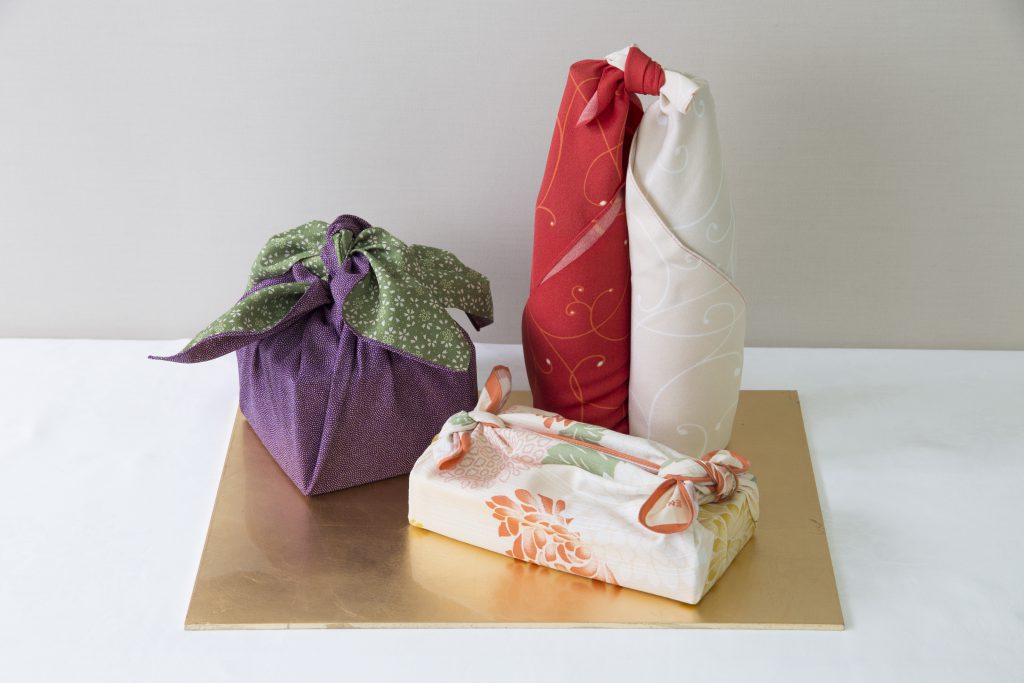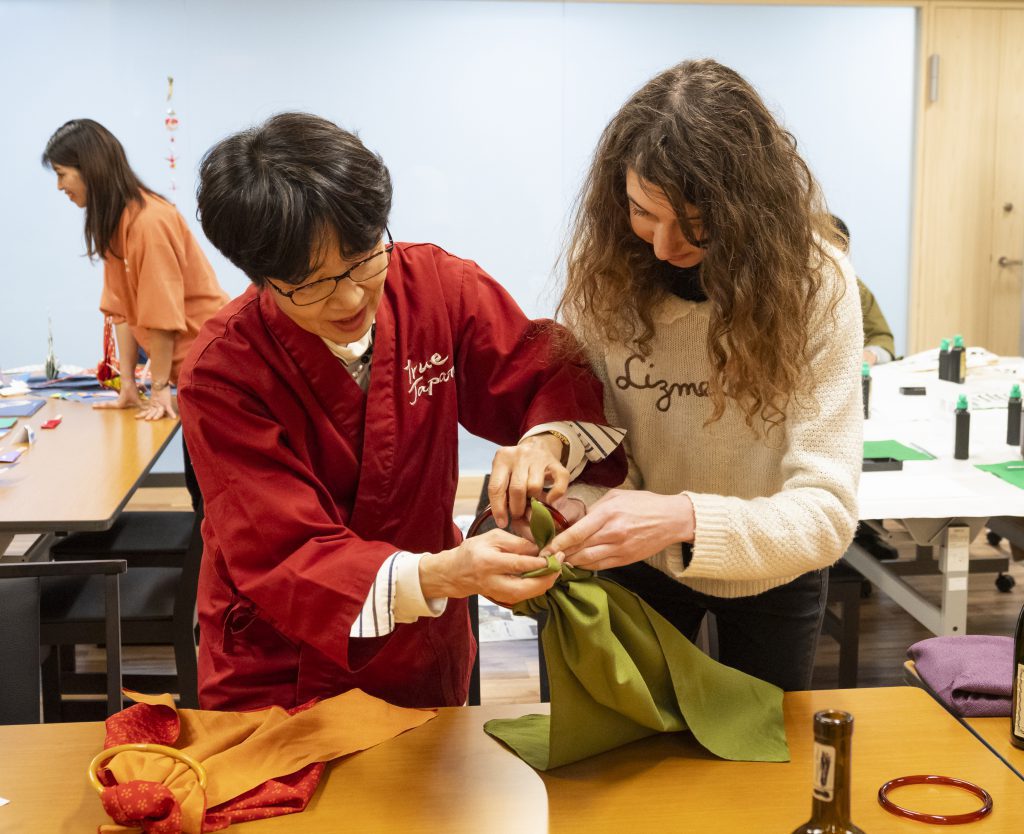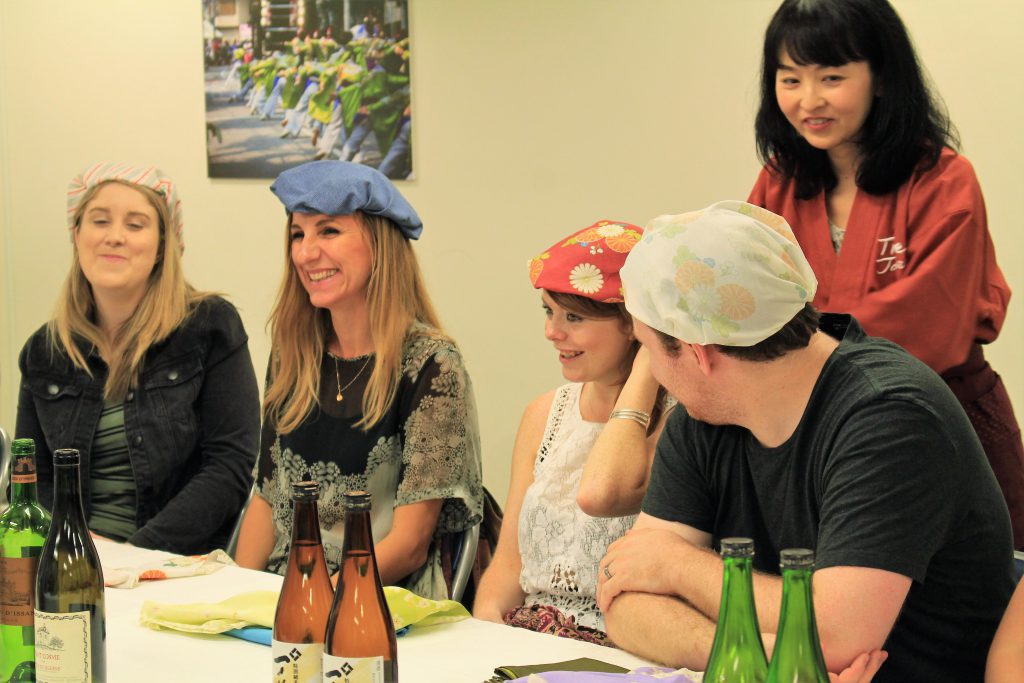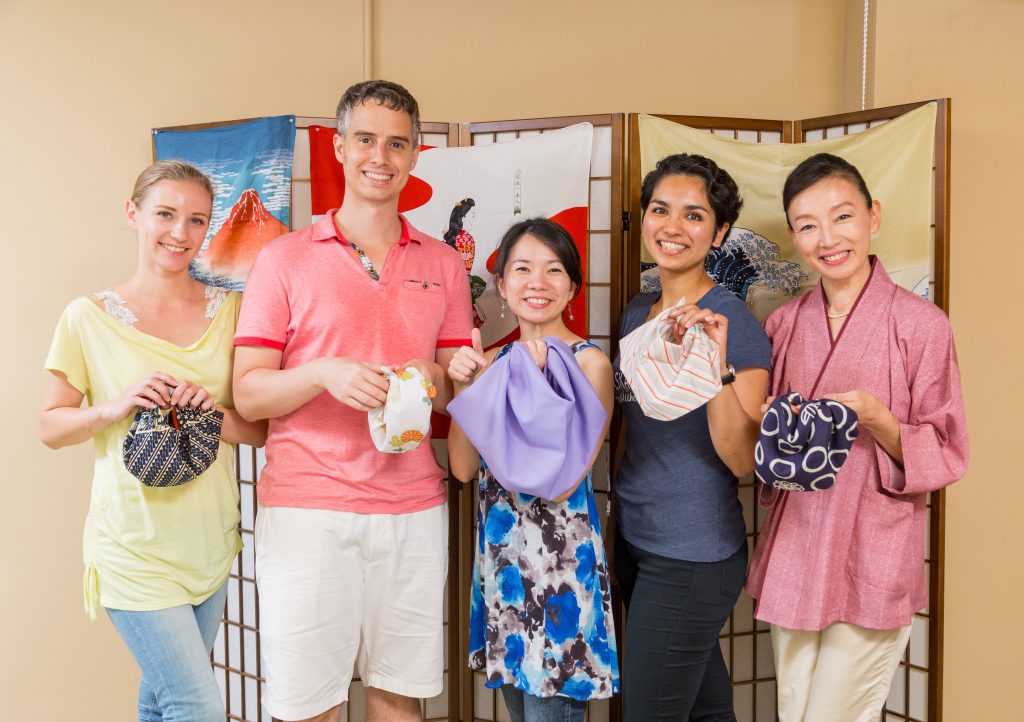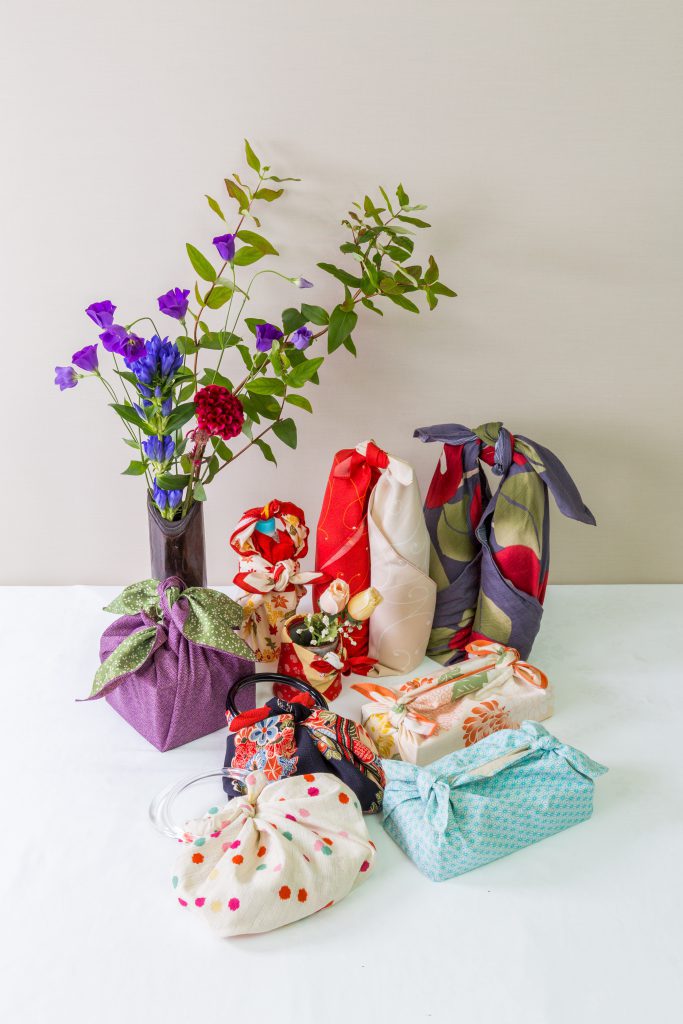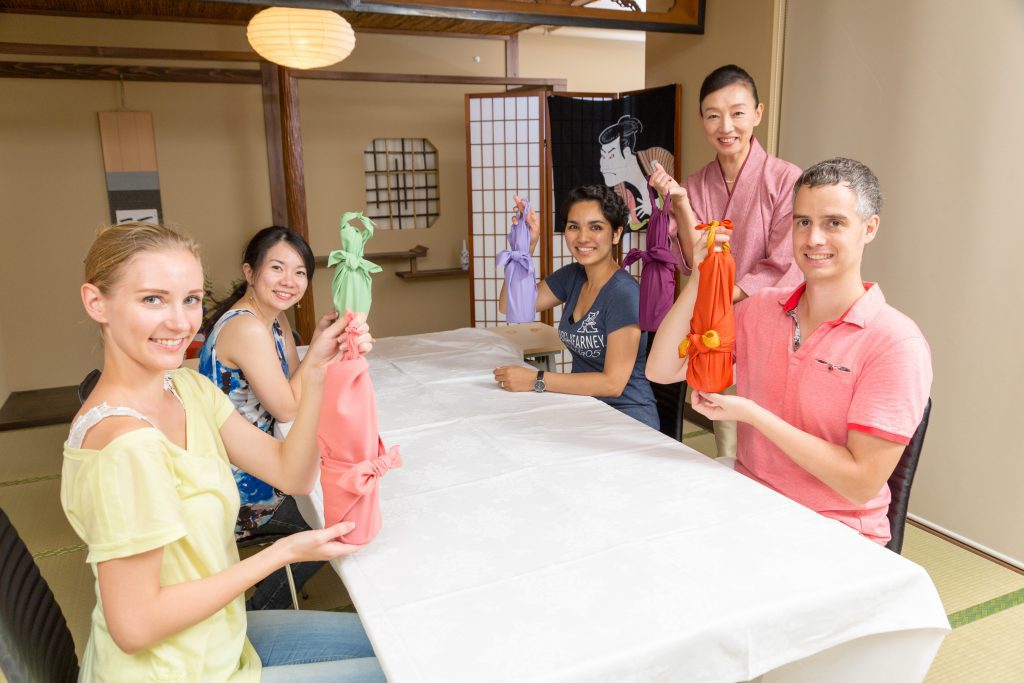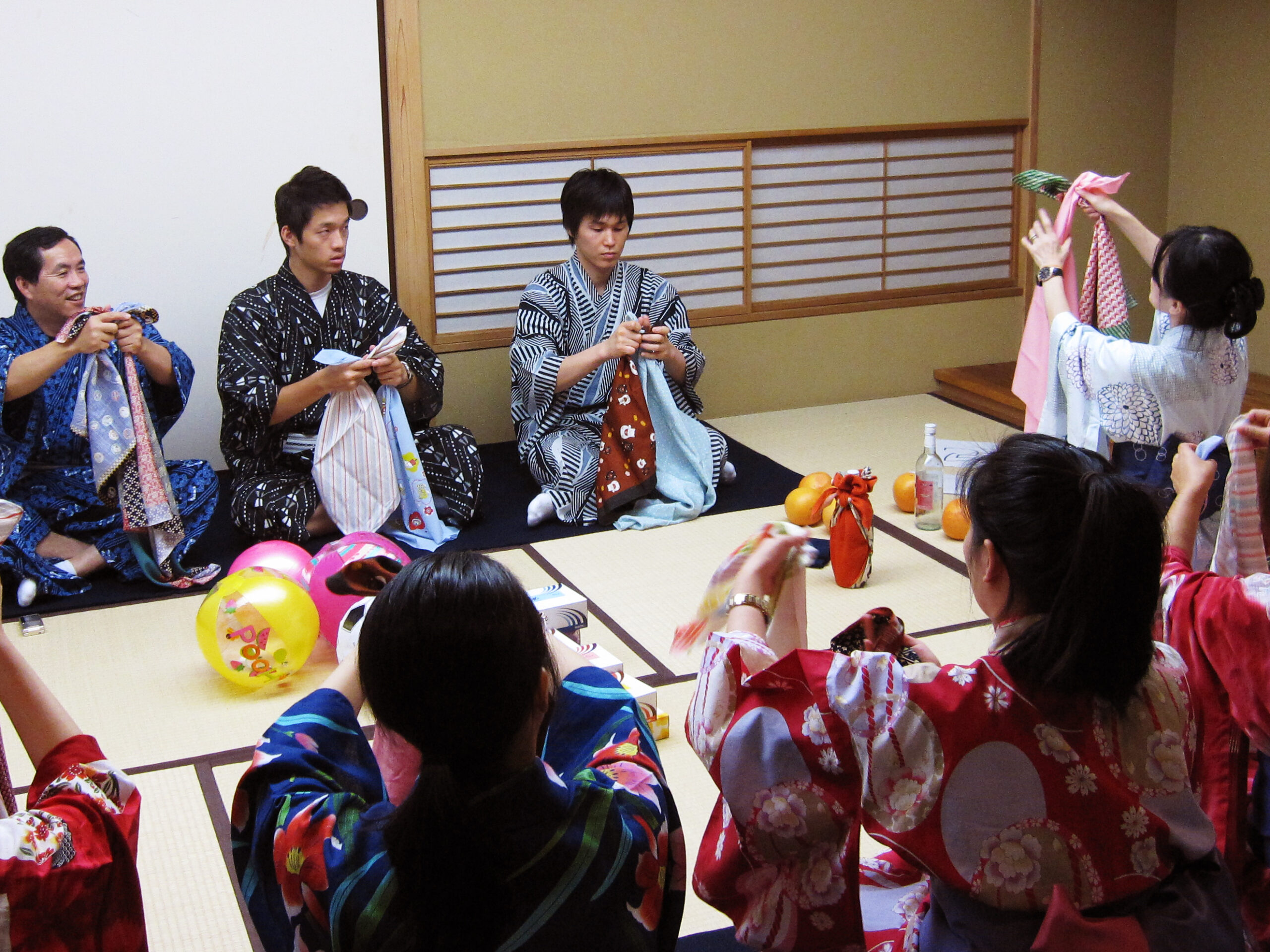Furoshiki Cloth Wrapping
C012
This program is an introduction to furoshiki cloth wrapping, the traditional Japanese art with an eco-friendly heart. As part of the experience, learn seven different furoshiki techniques, discover the environmentally friendly alternatives to household items, and make bags, hats, covers and more!
HIGHLIGHT
* Learn 7 different furoshiki techniques from a nationally licensed instructor
* Discover all about the history and culture of furoshiki
* Try out eco-friendly folding practices for reducing your plastic consumption
* Take your furoshiki cloth back with you as a souvenir
In this experience, you will learn the following furoshiki pieces and techniques*:
1 A furoshiki hat
2 Basic wrapping (with a tissue box)
3 A furoshiki bag
4 A double-handled bag
5 A plastic bottle cover
6 A tissue box cover
7 A wine bottle cover
*Please feel free to ask your instructor if there are any other particular pieces you would like to make.
WHAT YOU CAN EXPECT
What is Furoshiki?
A furoshiki is a light square-shaped cloth that is used for the purpose of carrying and/or wrapping items. Furoshiki are sold in a wide range of sizes, usually from 50 cm to 120 cm, and they come in a variety of intricate designs and colors. In the past, they were typically made of silk and cotton, but nowadays are available in rayon and other materials. Usually, beautifully (and sometimes painstakingly) decorated, they make ideal souvenirs.
However, though aesthetics are important in furoshiki, the most useful aspect of them is their various uses. Furoshiki remain a popular Japanese cultural item to this day because they can be used to securely wrap and carry anything from boxes to expensive wine bottles. What’s more, the centuries-old wrapping cloth is becoming increasingly popular again thanks to its eco-friendly reusability. But furoshiki takes technique! There is much skill needed in accurately wrapping furoshiki cloths in aesthetically pleasing designs. And this is where our program comes in!
The Program
In this program, a nationally certified instructor will teach you how to wrap furoshiki wrapping cloths in a variety of intermediate designs. You will learn seven different furoshiki techniques, along with the history and modern-day applications of cloth wrapping. As part of the program, our experienced instructor will assist you in making the most aesthetically-pleasing furoshiki covers, and you will receive a furoshiki to take home as a souvenir.
More info
The History of Furoshiki
Furoshiki, under the name “tsutumi”, were first introduced in temples around the 8th century, though they were not used in secular households until the 14th century. During this time, upper-class nobles and samurai began to use furoshiki to wrap their cloths, particularly when frequenting bathhouses. Over time, more and more intricate designs were added to the cloths, including the family crests of nobles. Later, in the 16th century, furoshiki became popular among the general public as bathhouses became more and more common.
In the 17th century, furoshiki then took on a new role. As feudal lords and their retainers were required by law to travel back and forth between Edo (historical Tokyo) and their domains every two years, a new type of small and easy-to-handle wrapping cloth was developed for carrying items. This use for furoshiki also gradually spread to the general public.
Today, furoshiki are popular once again. Being made from natural materials such as silk and cotton, as well as even the likes of recycled plastic bottles, they are gaining an environmental reputation among the international community. Thanks to this, the material and designs used to make furoshiki have become even more diverse, and many people are choosing to switch to them from the likes of plastic bags.
Furoshiki wrapping is a cultural aspect that has been nurtured over a long history, but thanks to its fashionable designs and eco-friendly nature, it looks like it will go through a renaissance once again.
Itinerary
CANCELLATION POLICY
In case of cancellation of a reservation, the following cancellation charges will be applied:
(1) 14 days to 3 days prior: 20% of the program fee
(2) 2 days prior: 50% of the program fee
(3) 1 day prior to the program or no-show: 100% of the program fee
*A separate remittance fee will be charged.
There are no reviews yet. Be the first one to write one.
PROGRAM FEE(Excl. consumption tax)
- Fee per Person
- 10,800JPY
- STARTING TIME
-
(1) 8:30~
(2) 10:30~
(3) 13:30~
- DURATION
- 90 mins
- LOCATION
-
Senshinan (B208) in the Kikai Shinko Kaikan Honkan building (2 minutes north of Tokyo Tower)
- MINIMUM NUMBER OF PARTICIPANTS
- 2 people
- INCLUSIONS
- * Instruction in English
* One souvenir furoshiki (50 cm square)
* English textbook
- EXCLUSIONS
- * Transportation to the venue
- NOTIFICATIONS
- * This is a shared program. Multiple groups may take this program at once.
* Please follow the instructions of the guide during the program. We will not be responsible for any accidents that may occur due to disobedience of the guide's instructions.
* The program duration stated is only an approximate. Please note that the duration of the experience may vary depending on situation and number of guests.
* For the cultural experience programs, you are required to meet our guide at a designated meeting place. If you are late, please contact us at 03-6432-0195 during business hours (from 8:00 to 17:00 on weekdays,from 8:00 to 10:00 on Saturdays). We may also provide you with an additional telephone number to contact in advance of the program.
Please note: The main entrance to our facility is locked on Saturday afternoons, Sundays, and national holidays.
If you attend an experience on one of these days, please wait in front of the lobby and a staff member will come to meet you.
* If you require special assistance during the program due to any of the following: religious reasons, physical conditions, illness, allergies, or age of children, please be sure to indicate this in the remarks section of the reservation form at time of application.
Please note that we cannot guarantee any arrangements or changes to the program without prior inquiry
* The minimum number of participants for our cultural experience programs is 2, with the exception of the kimono experience, which can be attended as a single participant (1+ participants).
* This program is typically held in English. However, languages other than English can also be supported. Please inquire at info@truejapantours.com for details.
* Our business hours are from 8:00 to 17:00 on weekdays,from 8:00 to 10:00 on Saturdays. Please note that inquiries received outside of business hours will be handled on the next business day. The application deadline for this program is 10:00a.m. (Japan Standard Time) five business days prior to the tour date. If you wish to apply after the deadline, please contact us at info@truejapantours.com.
* Please note that we cannot guarantee arrangements for programs purchased after the application deadline without prior inquiry.
Stocker
BOOKMARKS
- Not available.


